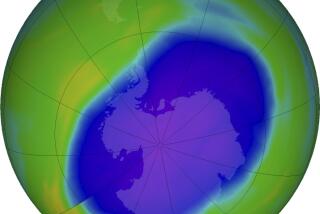Interest Rates
- Share via
The tyranny of compound interest has again reared its ugly head on the front page of The Times (Feb. 2), in the very informative feature article on ozone depletion. I don’t wish to minimize the importance of the subject, but only to point out that small rates of increase can lead to unexpectedly large amounts of increase, if given enough time.
For example, your article mentions as one estimate of the rate of increase 4.5% per year, and also mentions a date of 2075, 90 years from now, almost as if this were a reasonable combination to worry about. For the record, an increase of 4.5% per year for 90 years leads to an increase in the fluorocarbon production of a factor of 57.
That is, these seemingly innocuous and reasonable numbers conceal what has to be regarded as a very unlikely consequence. The world population seems to be increasing at a rate near 3% per year at this time, and a similar calculation makes the population 15 times what it is now, or about 60 billion souls, in 2075. One way or another, that is simply not going to happen, nor is the production of fluorocarbons going to go up by a factor of 57.
Of course the ozone depletion issue is a real environmental problem, but beware of purveyors of percentage increase rates, extended over long periods. This can be turned around. If we are really concerned about what will happen to nuclear wastes in a thousand years, let’s put a dollar into a savings bank now, at an interest rate of 4% over inflation, which most agree is a reasonably conservative historical average. At the end of a thousand years, we will have $235,385,000,000,000,000 in the bank, in 1986 dollars. That ought to take care of most problems.
H.W. LEWIS
Santa Barbara
More to Read
Sign up for Essential California
The most important California stories and recommendations in your inbox every morning.
You may occasionally receive promotional content from the Los Angeles Times.












